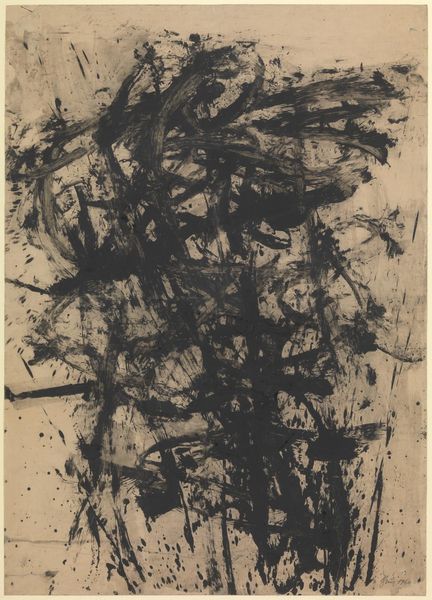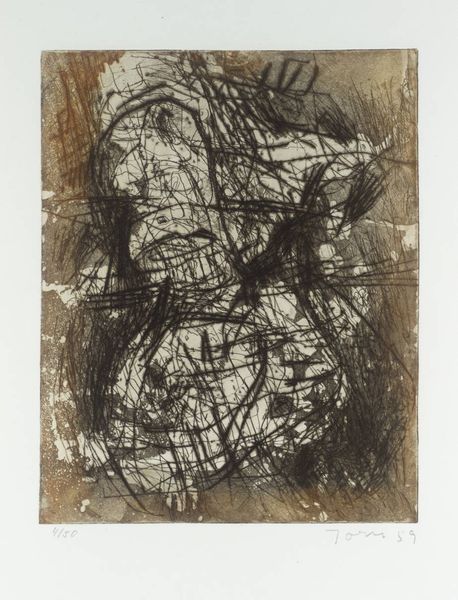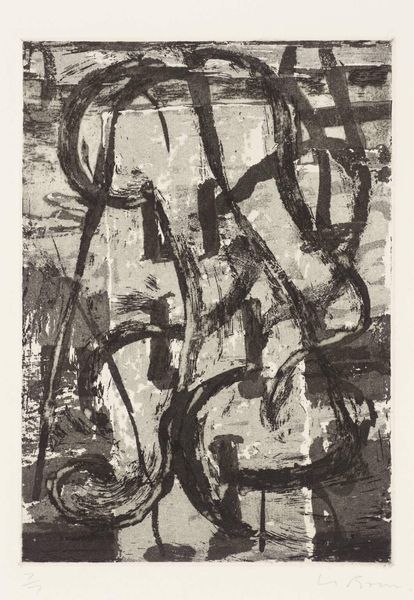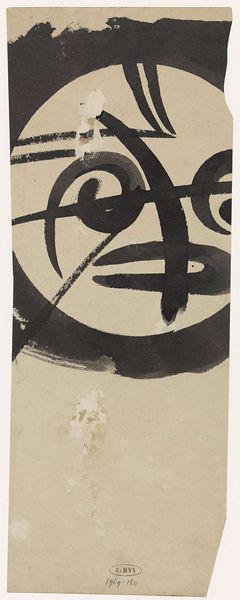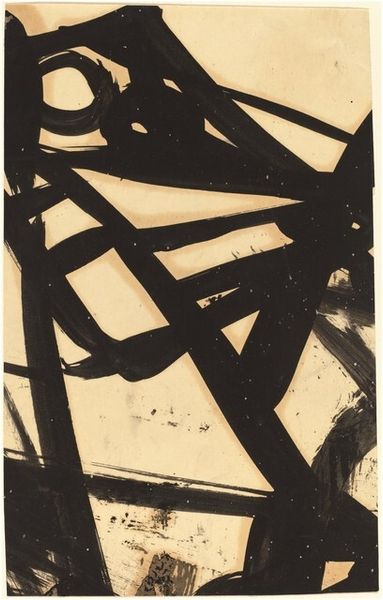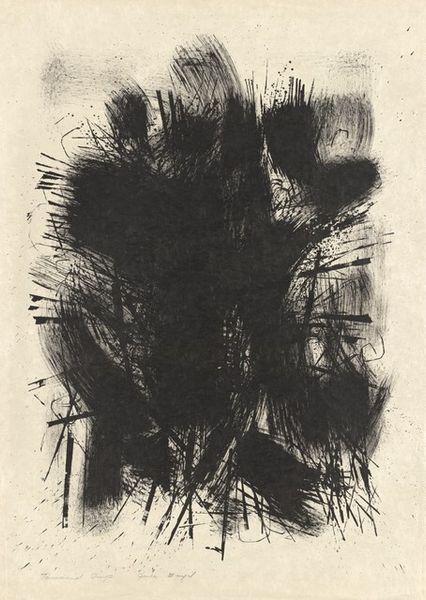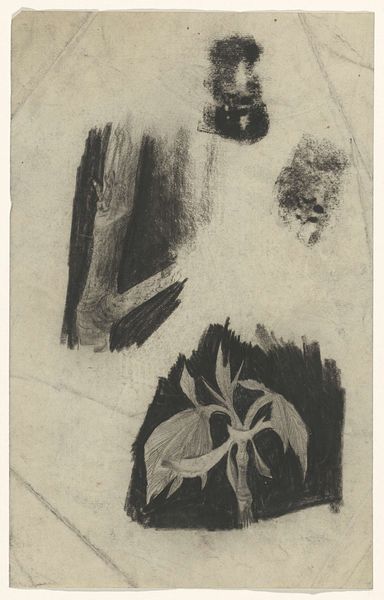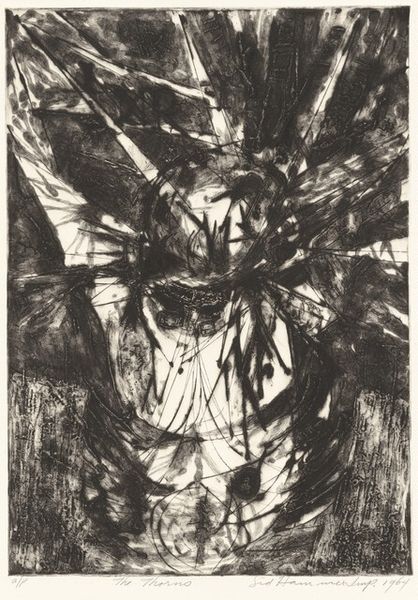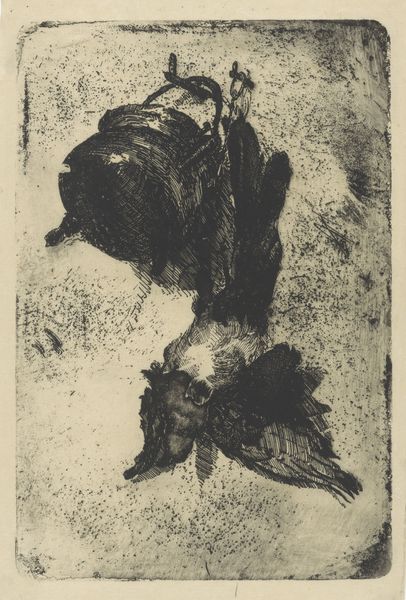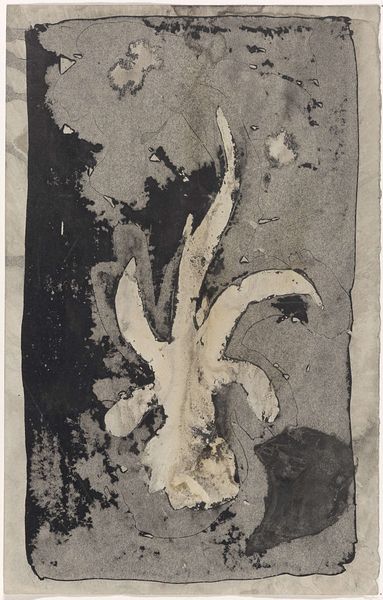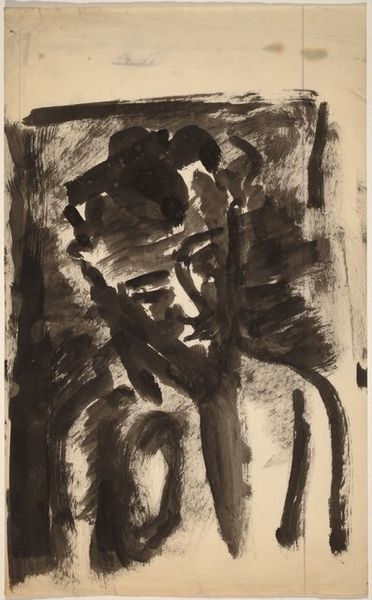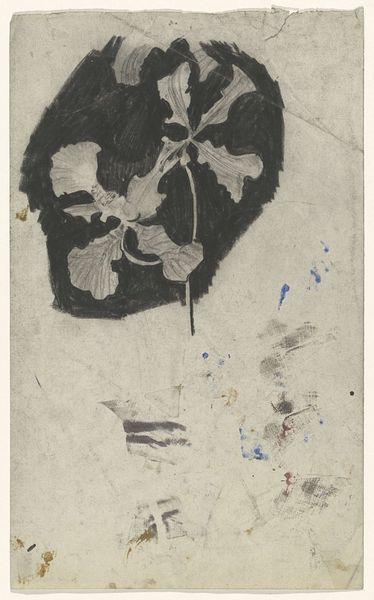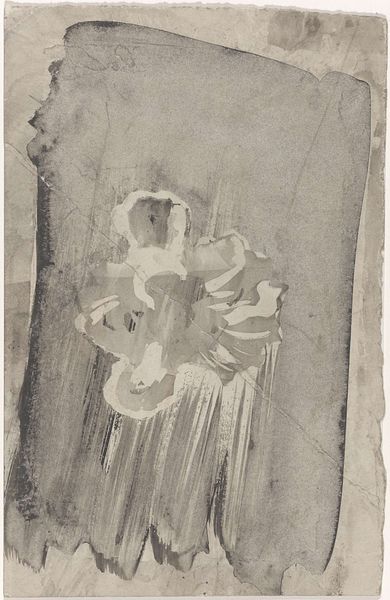
drawing, paper, ink
#
drawing
#
pen sketch
#
pencil sketch
#
paper
#
ink
#
pen-ink sketch
#
abstraction
Dimensions: height 204 mm, width 323 mm
Copyright: Rijks Museum: Open Domain
Editor: So, here we have Carel Adolph Lion Cachet's "Orchidee," made sometime between 1874 and 1945. It’s an ink and pencil drawing on paper currently held at the Rijksmuseum. I’m really struck by the contrast; the stark white flower leaps out from this brooding, dark background. How do you interpret this work? Curator: Well, considering Cachet’s historical context, we have to consider this through the lens of late 19th and early 20th-century art institutions. How did a drawing like this enter into museum collections and achieve the status of “art?" It seems quite abstract, right? It also makes me consider the political dimensions. Abstraction often held complex meanings, particularly as definitions and ideals surrounding "beauty" changed in those periods. What kind of social messaging do you think Cachet’s abstraction evokes or possibly challenges? Editor: I guess it depends on what circles the work was circulating within. If it was viewed within the context of academic art, the level of abstraction could be seen as a challenge. Otherwise, perhaps its playing with the ideas of newness? Curator: Exactly! The art world was shifting then, influenced by rapid social and political change. Consider, too, how institutions like the Rijksmuseum played a part in defining what was culturally valuable and, ultimately, who benefited from these artistic representations. This image presents the orchid out of its typical "still life" form and shows its potential in a different form. What did that decision represent at the time, or is it perhaps ahead of its time? Editor: That's a really helpful way to reframe my thinking about the work, focusing on its historical and institutional context. Thanks! Curator: And thank you; it’s a good reminder to always consider the agency involved in defining something as "art" and, likewise, a critique when an element such as abstraction presents in unexpected, creative ways.
Comments
No comments
Be the first to comment and join the conversation on the ultimate creative platform.

